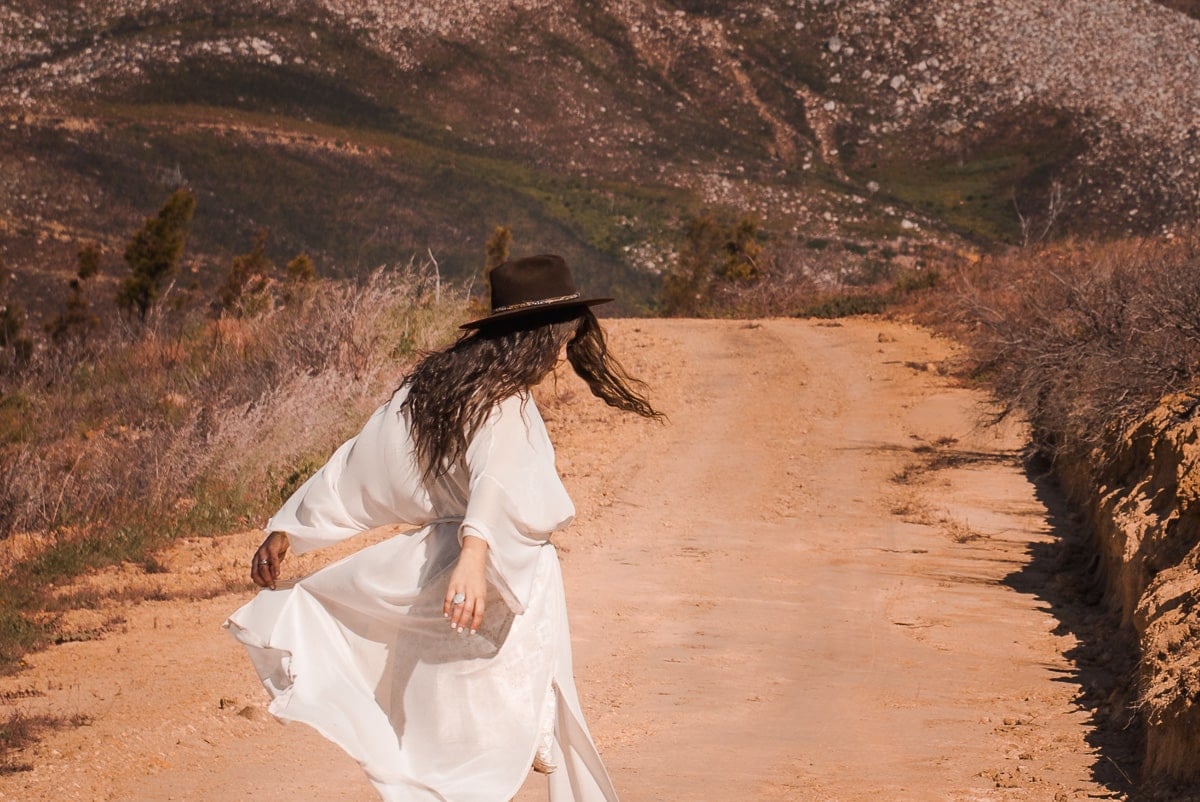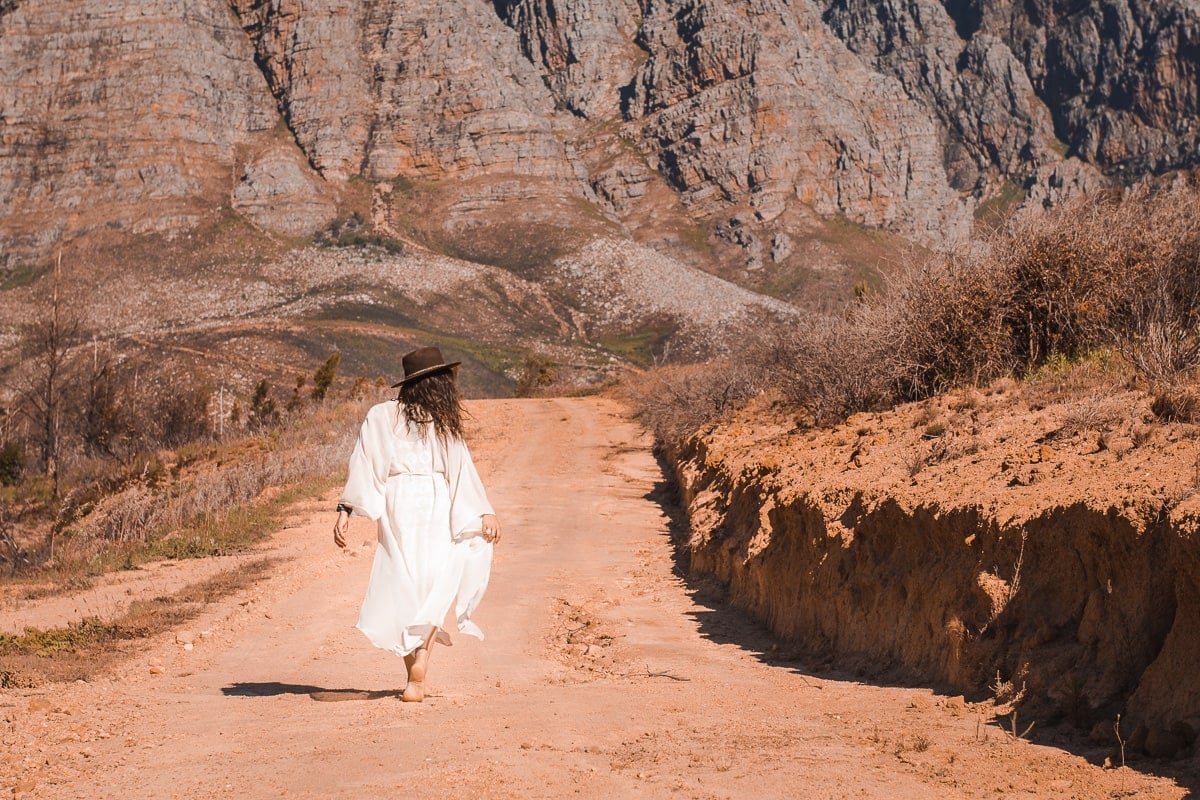What is focus lock?
Before we start figuring out how to use focus lock, it’s probably a good idea to explain what focus lock is.
It sounds quite dramatic, but focus lock is a way to focus on a subject and keep the focus on that subject, even if you move or your subject moves.

How do you lock focus when using autofocus?
You have three ways to use the focus lock camera setting with autofocus. They are:
- Single servo – AF-S (Nikon) or One Shot (Canon)
- Continuous servo – AF-C servo (Nikon) or AI Servo (Canon)
- Back button focusing with isolated shutter release
The names are way more complicated sounding than it really is.
Let’s look at each of these autofocus camera settings in greater detail. I’ll also explain when and why to use each one.

1. Single servo
When using single servo focusing the camera will focus on your subject when you part depress the shutter button. As long as you keep the shutter button depressed, the focus won’t change.
This is usually the first method of locking focus that photographers use when starting out.
When to use single servo focus lock?
This is ideal if you want to “focus and recompose”. You may have heard of that term. So, for example, you want to place your subject off centre in the frame. Such as when composing an image using the rule of thirds technique.
How to use single servo focus lock
It’s far less technical than it sounds…
- Part depress the shutter button to focus on your subject.
- Then, without changing the distance between the camera and your subject, move the camera to recompose the shot as you would like.
- When the image is composed in the frame to your liking, fully depress the shutter button to take the shot.
Drawback of single servo focus lock?
If either you or your subject move closer or further away before you fully depress the shutter button, they’ll no longer be in focus.

2. Continuous servo
It’s probably a bit obvious now what this is, but I’ll say it anyway.
When your focus is set to continuous servo, the whole time you part depress the shutter button to focus on your subject, it’ll lock on and track the subject to ensure that the focus is correct.
When to use continuous servo focus lock
Essential times for continuous focus lock are when your subject is moving, such as in:
- Sport photography
- Photographing children (they’re never still)
- Your subject is walking towards you (confetti shot at a wedding).
Another time is when you’re moving – maybe you’re photographing a stationary subject from a car or a boat.
How to use continuous servo focus locking
As with single servo focus lock…
- Part depress the shutter button to focus on your subject.
- Keep the button depressed and ensure that the focus stays on your subject, until you’re ready to take the shot.
- Then depress the button fully.
With this method you’ll hear the focus shifting as either you or your subject move.
Drawback of continuous servo focus lock?
You can’t “focus and recompose” the shot as the moment you move your focus point away from your subject the focus will shift to whatever’s in front of the focus point. You therefore need to decide on your composition ahead of taking the shot, position the focal point over your subject and then depress the shutter button to focus etc.
Alternatively, you’d need to get comfortable with moving the focus point around with the subject while part depressing the shutter button to maintain focus lock. Read on for an easier way of doing this – in the next point.
Here are more tips for focusing on fast moving subjects.

3. Back button focus for locking focus
There are 2 ways to use the back button focusing technique:
- You can set the back button focus button as an additional focusing button so that you have the option to use the standard method of using the shutter release button or the back button focus button to focus.
- Alternatively, you can isolate the focusing ability of your camera to just the back button focus button so that the shutter button’s sole function is the take the shot, with no focusing ability (this is what I’ve done and I think it is the most common way of using back button focus).
Use back button focus with both single servo or continuous servo focus modes.
When to lock focus with back button focus
I find back button focusing best at least 99% of the time. It’s particularly great for:
- Photographing children
- Wedding photography
- Portrait photography
- Sports photography
- Wildlife photography
The list is endless, because it’s the best way to lock focus any time you’re photographing movement.
But also…
- Still life (I’ll explain)
- Macro photography
Back button focus for still life
Back button focus is great for photographing still items with the camera mounted on a tripod. You can focus once using back button focus to lock focus. Then, as long as the focal distance between camera and subject doesn’t change, you can just push the shutter button to take the shot each time.
You won’t need to look through the viewfinder and focus each time.
The best example of this is photographing flat lays with the camera mounted on a tripod pointing down over objects below. I can change the arrangement of the objects as much as I like and simply depress the shutter button with each new arrangement, without having to even look in the viewfinder. It saves me a lot of time, and energy climbing up and down my little steps to view and refocus with each new arrangement.
Use back button focus for locking focus with macro photography…
With macro photography, any small change in the focusing distance impacts the sharpness of the focus. If you use back button focusing with continuous servo, the subject will constantly be tracked until you’re ready to depress the shutter button to take the shot.
Drawback of using back button focus for focus lock?
The only difficulty is if you want to move the focus point while tracking your subject, without using 3D tracking (Nikon). On my camera both functions require my thumb. It is, however, really quick to move between the two functions, so with practice can be done without much interruption.

My preferred method of locking focus?
You’ve guessed it – continuous servo, with focusing isolated to back button focus so that the shutter button’s sole function is to activate the shutter to take the shot.
Why not just part depress the shutter button to track the focus and not worry about back button focus?
Well, with back button focusing the camera continues to focus, even when the shot is being taken.
If you part depress the shutter button to focus, then take a shot, the camera will need to refocus before being able to take another shot. You could lose the moment.
Still having trouble getting sharp photos? It might not be focus, so you might find this article on how to take sharp photos helpful.
Leave a comment
If you have any questions about focus lock, let us know in the comments.
Also, I love good news, so if my photography focus tips have helped you to understand how to lock focus, share that too.
Interresting article. But as the percentage of Sony users is increasing, is it possible to also include the Sony equivalent together with the Canon and Nikon?
Hi Jane
As I have now had my Nikon d5600 for about 12 months I’m always learning how to do new things with it. I’m happy to say I feel I’ve mastered the 3 priority settings ie aperture. Shutter speed and manual modes. I love you emails as it helps me to build my confidence when I follow your tips on all The different things we can achieve what I would like to know is how would I photograph a still person whilst there’s a moving train behind so my subject are sharp but the train looks like it’s really going fast with motion blur.
Kind regards Dave.
Hi Dave
Thank you – really appreciate your kind words!
For that you’ll need to play with slower shutter speeds. As the subject is still and the train is moving you won’t have to slow the shutter down too much. The faster the train is moving, the easier it will be. Check out this tutorial… https://thelenslounge.com/movement-photography-techniques/